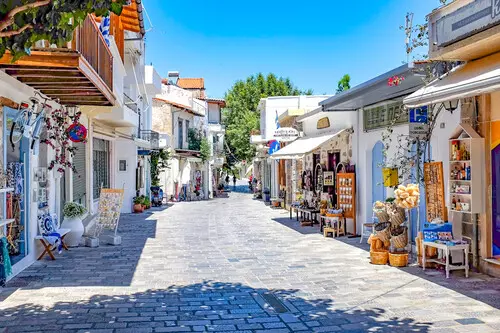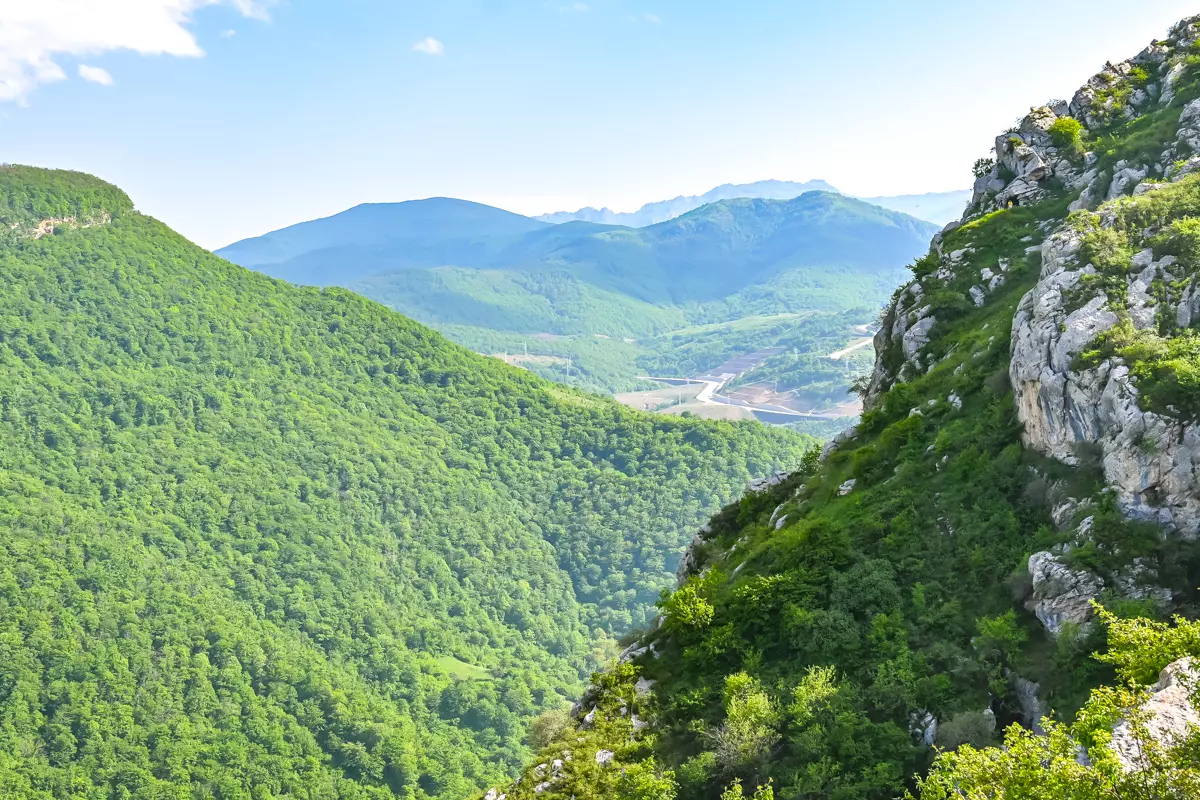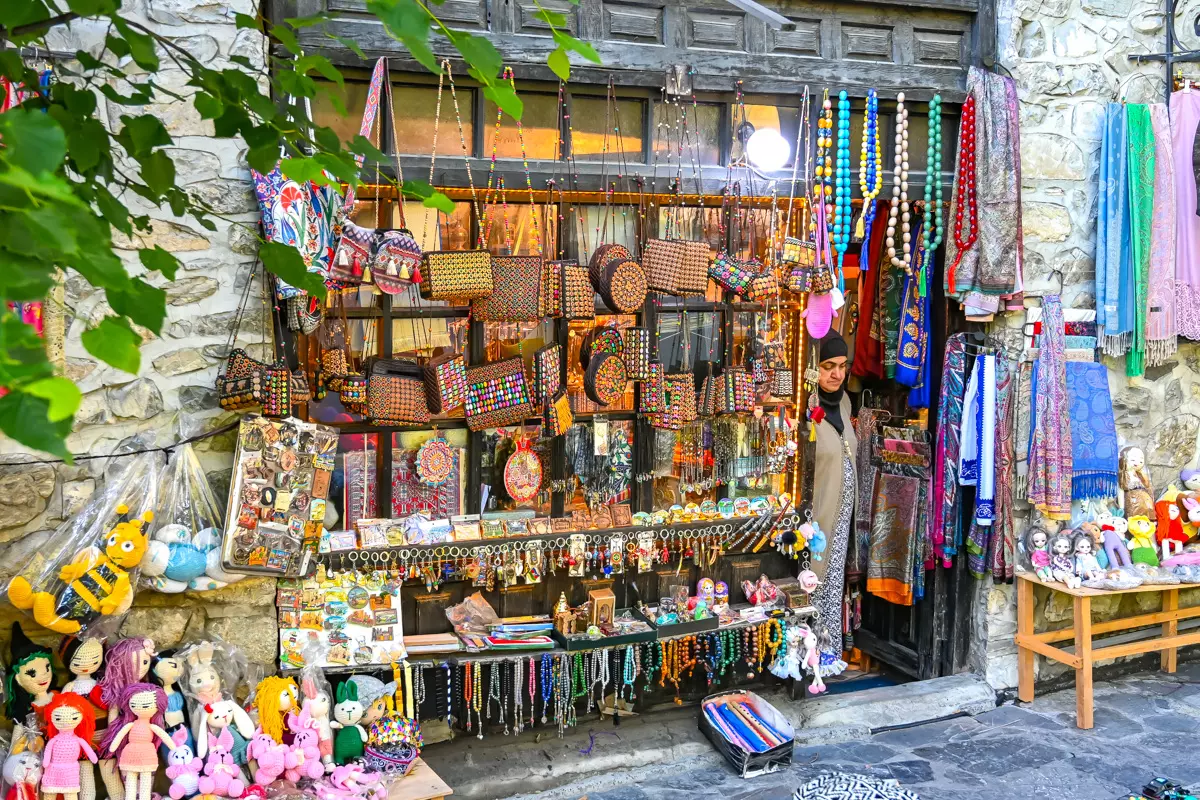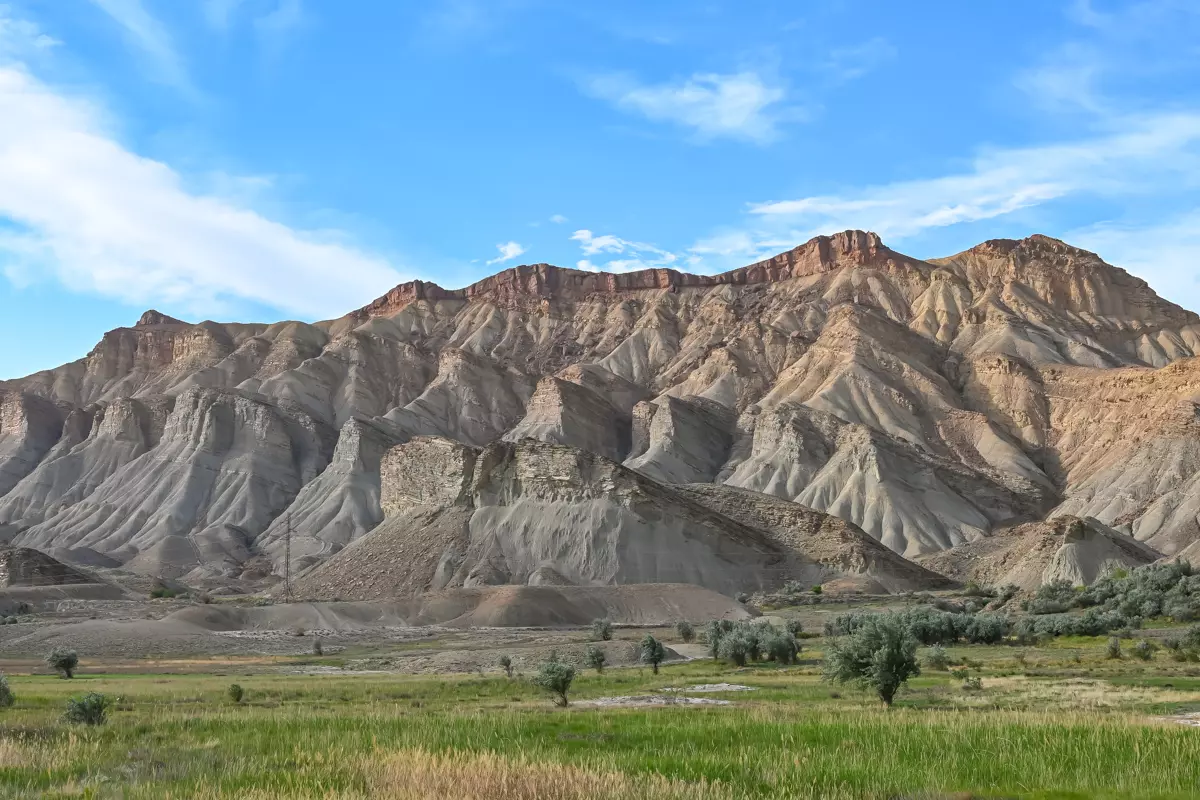My Experience In Nagorno-Karabakh, Azerbaijan (Travel Tips & Insights)
Nagorno-Karabakh is a region in the southwest of Azerbaijan that has long been the epicenter of geopolitical conflicts. After the 2020 war, Azerbaijan took control of almost the entire region, and in September 2023, the separatist government, supported by Armenia, was finally liquidated. Since then, Azerbaijan has begun reintegrating the region: developing infrastructure, rebuilding cities, and preparing areas for the return of people.
While I was in Nakhchivan, I unexpectedly found out that Nagorno-Karabakh was now open to tourists, so I immediately started looking into how to get there. Although it took quite a bit of effort, I managed to reach this unique land on a guided tour. The trip was one of the most memorable and interesting ones I’ve had in recent years. In this guide, I’ll share key information that I hope will help make your journey to this land, rich in dramatic history, easier.
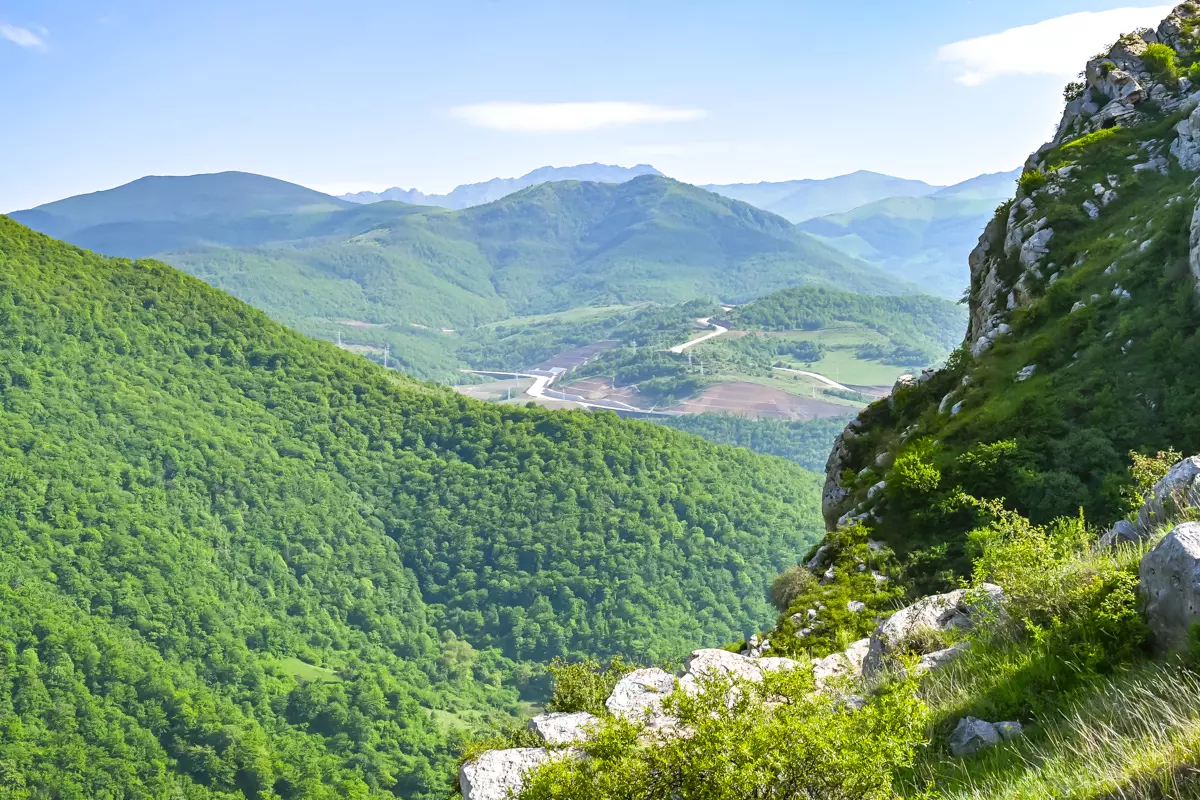
Things To Do In Nagorno-Karabakh
Sugovo Village
If you’re arriving in the Nagorno-Karabakh region from Baku, one of the first places to stop is Sugovo village. It is located near the town of Tartar, next to the Sugovo reservoir, which has been strategically important both militarily and in terms of energy.
The village itself now covers a large open area with remaining ruins and several reconstructed buildings. In some places, there are still walls, foundations of former houses, charred roofs, and signs that provide information about the sites.
An exceptional spot is the reservoir located on the outskirts of the village. This artificial water body supplies water to parts of the Karabakh and Tartar regions. From higher points, you can enjoy a beautiful view of the valley and the surrounding hills.
The Ruins of Agdam
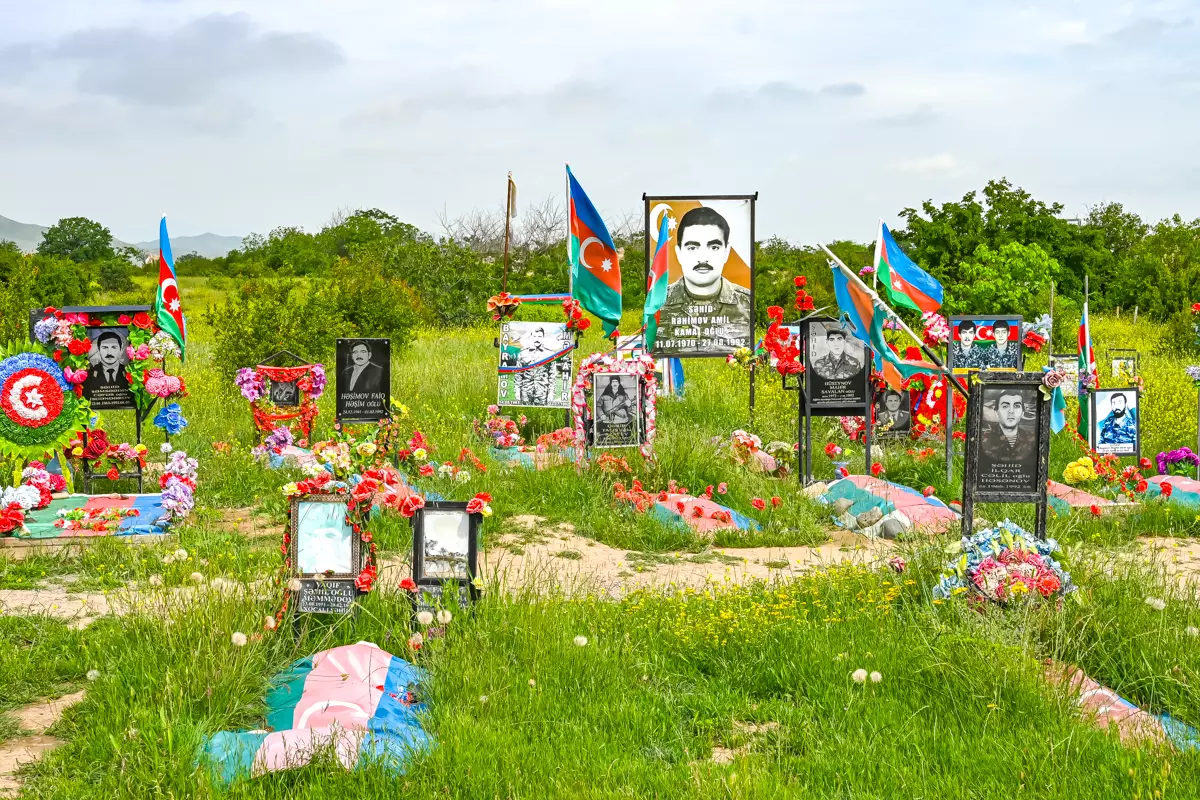
Agdam was once a city in the eastern part of Nagorno-Karabakh, now completely abandoned. From 1993 until 2020, it was under Armenian control but was later taken over by Azerbaijan. Unfortunately, Agdam remains one of the most well-known ‘ghost towns’ in the entire Caucasus.
As I approached Agdam, the first thing that struck me was the vast plain scattered with the remains of hundreds of collapsed buildings. The majority of the city consists of piles of bricks, concrete, and metal. Only fragments of walls remain, with outlines of former schools, apartment buildings, and shopping centers visible in some places. These days, visitors mostly stop by the restored mosque, which was severely damaged during the war.
I was fortunate to meet a very friendly group of local women while traveling by bus, who shared a wealth of information not just about Agdam, but about the entire Mountainous Karabakh region. During our conversations, one of the most difficult moments came when they shared stories of the violence people had endured, including heartbreaking tales of those killed in Agdam. Visiting the local cemetery and seeing the graves of these individuals, it was hard to comprehend such brutality, and these deep stories will stay with me for a lifetime.
Good To Know: Allocate 1 to 1.5 hours for visiting the ruins. There is no infrastructure on-site – no shade, restrooms, or water.
Askeran Fortress
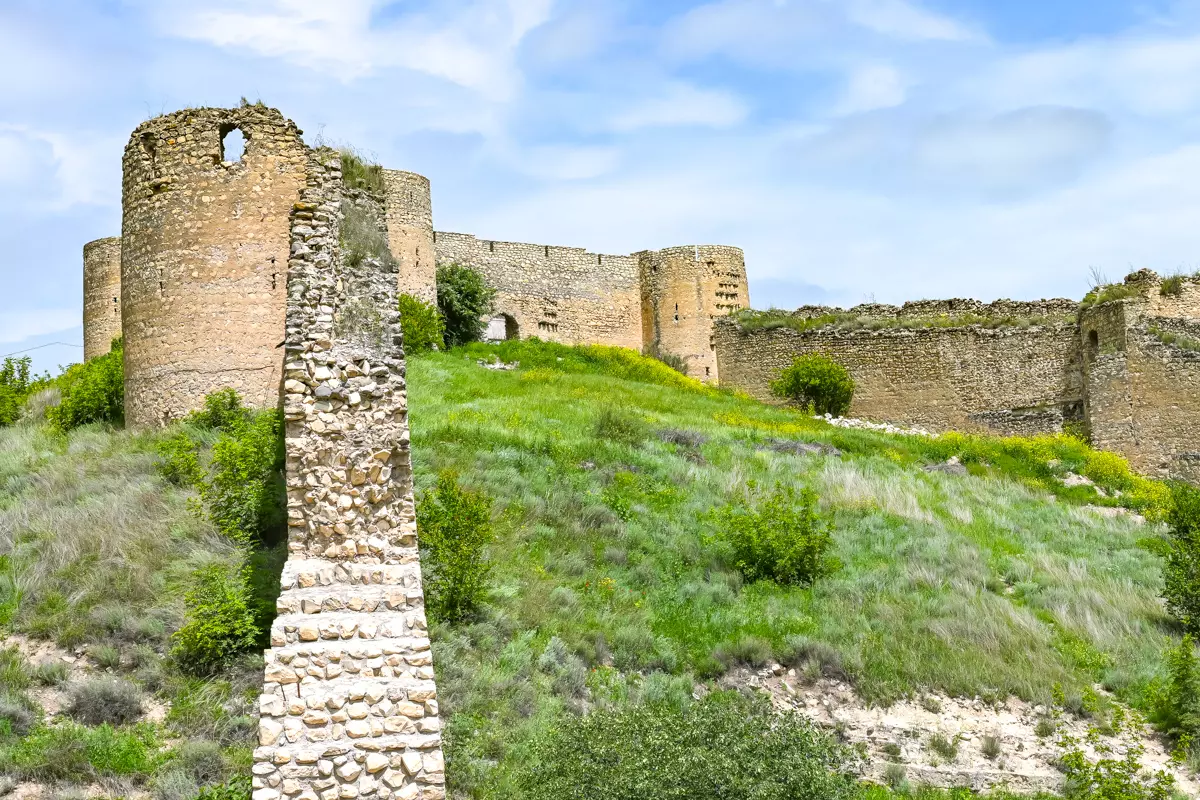
The Askeran Fortress stands near the old road that leads from Baku to Khankendi, about 30 kilometers north of Shusha. It is one of the best-preserved defensive fortifications in Karabakh, built in the 18th century under the orders of the Karabakh khan. The fortress’s purpose was to protect the entrance to the region from the plains side.
The fortress itself is located on two opposing hills on either side of the road. It still retains tall stone walls, watchtowers, and gate structures. Part of the area has been restored, but the main structures remain authentic.
You can walk along the walls, enter some of the towers, or stop at the lookout points, which offer beautiful views of the surrounding hills. There aren’t many informational boards, so if traveling independently, it’s a good idea to research the broader history of the area in advance. If you visit with a guide, they will tell you about the fortress’s significance in military conflicts, its capture, and the restoration process.
Tatik Papik
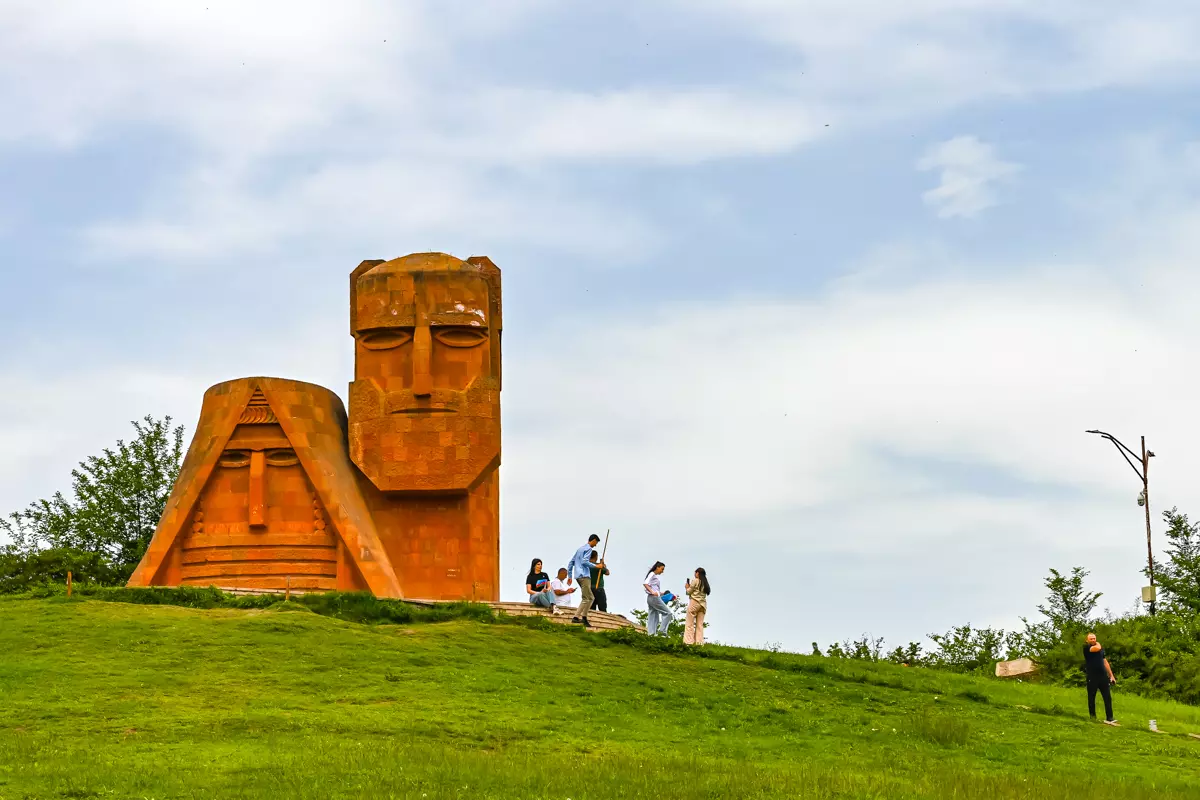
Tatik Papik is a monument located near the former Stepanakert, now known as Khankendi. It is an Armenian sculpture, built in 1967, depicting an elderly man and woman carved from volcanic rock. The sculpture was considered an unofficial symbol of the Armenians of Karabakh.
After 2023, control of Khankendi passed to Azerbaijan, but the monument remained in its place. The Tatik Papik stands atop a hill, near the main road leading to Khankendi. The sculpture is of moderate size, yet visually striking. The site is not actively promoted as a tourist attraction in Karabakh, but it is neither fenced off nor prohibited.
Khankendi
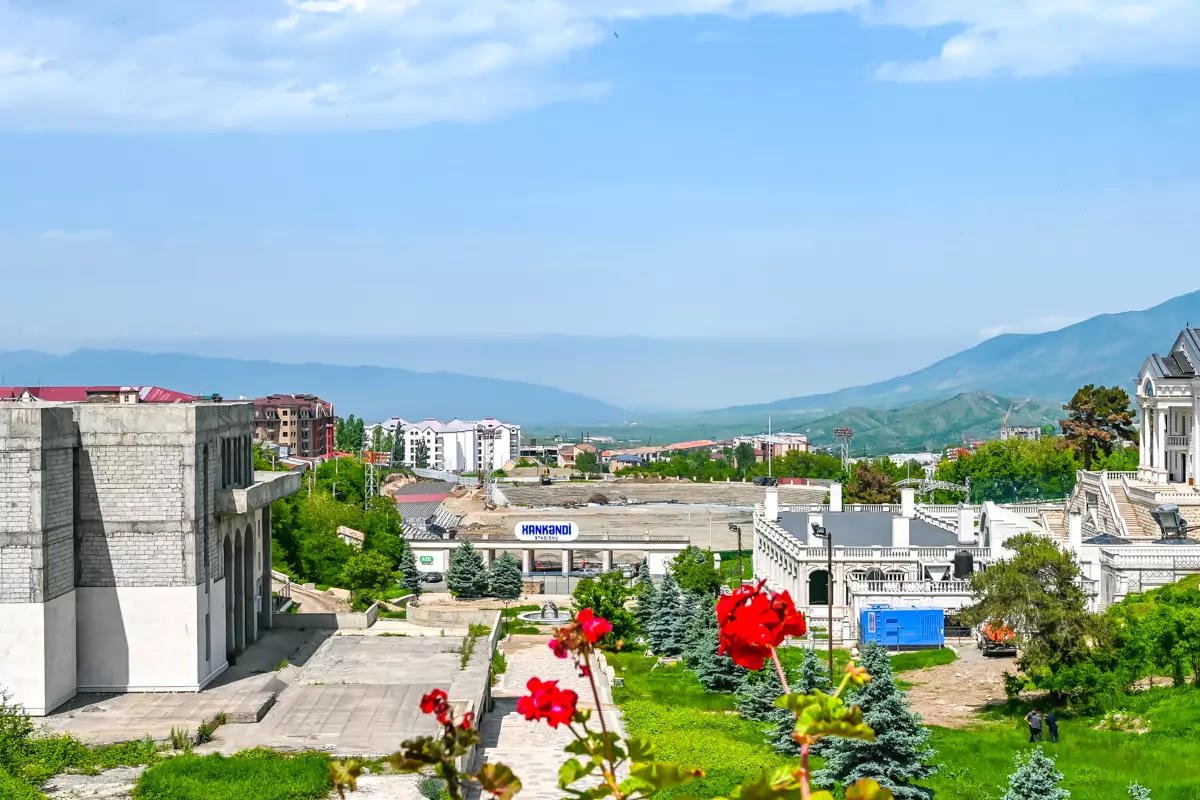
Khankendi is the largest city in the Karabakh region, formerly known as Stepanakert, and is now fully under Azerbaijani control. After the conflict, most of the population left, and the city is currently undergoing cleaning, restoration, and redevelopment works.
Much of the city’s infrastructure remains intact: the main streets, Soviet-style buildings, former cultural centers, schools, and squares. Unfortunately, a significant portion of the buildings are empty, some are damaged, or locked. Although the city still lacks official museums or tourist attractions, I believe it is only a matter of time before Khankendi attracts more visitors.
Discover: Sheki Historic Wonders Day Trip from Baku.
İsa Bulağı
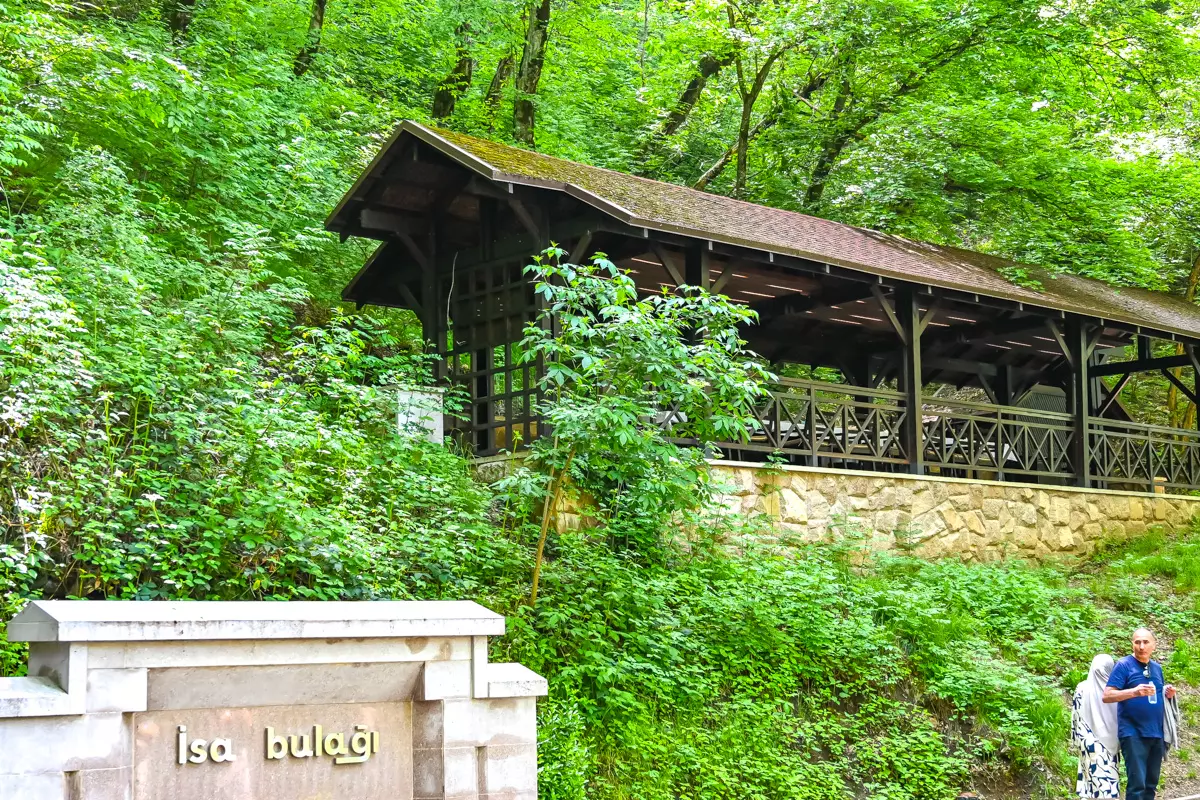
İsa Bulağı is a natural spring located near the Lachin road, at a strategically important point between Gubadli and Shusha. It is a popular stop for nature lovers traveling between the cities. The spring is known for its clear, cold water, which flows directly from the hillside rock. Locals consider the spring sacred due to its purity and healing properties, and it has been a revered site for generations.
The water flows continuously: cool and refreshing in the summer, and extremely cold in the winter. While there is not much infrastructure around, the area has benches, trash bins, and a gazebo, making it an ideal spot to take a short break.
Shusha
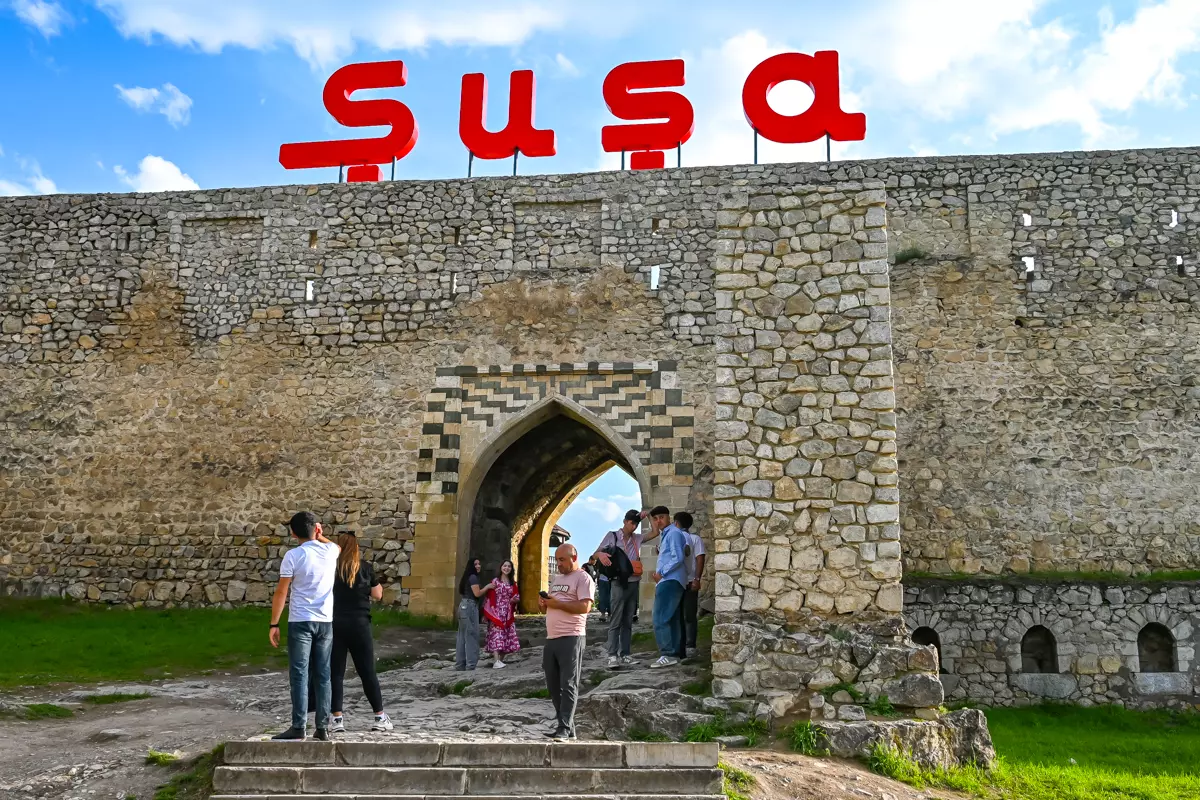
Shusha is the main city to visit in the Nagorno-Karabakh region, located about 1,400 meters above sea level. This city left a very good impression on me, and I believe it will become a popular destination for both locals and tourists in the future.
After the war, the city of Shusha came under Azerbaijani control and is now considered the cultural center of Karabakh. Currently, it is undergoing active reconstruction: roads are being built, historical buildings restored, and tourism infrastructure developed.
The city is primarily visited for its historical and cultural landmarks. The key attractions are: the Shusha fortress, the Yukhari Govhar Agha mosque, the Vagif mausoleum, the Jıdır Düzü plateau, and the Hunot gorge.
Currently, the city offers only a few hotels and a handful of small dining spots. Most visitors typically visit Shusha for a day or as part of an organized tour.
Lachin
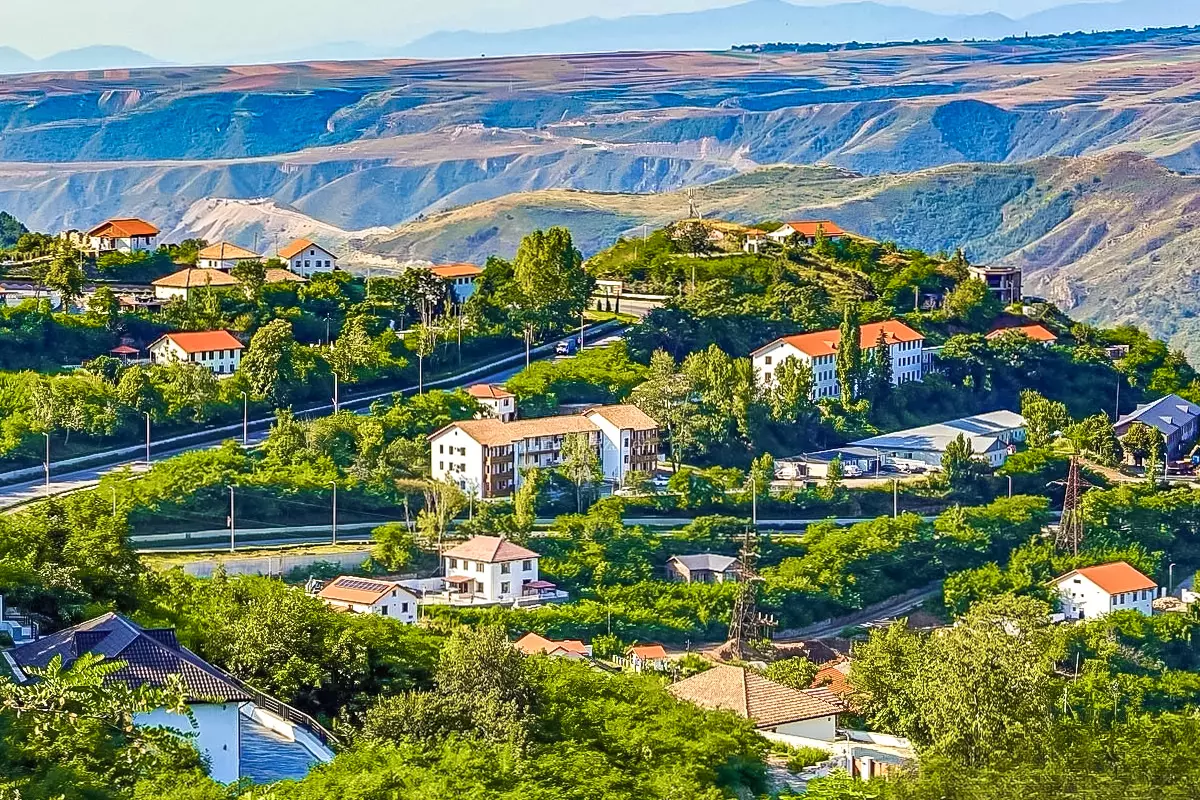
Lachin is a mountain town in southwestern Karabakh, located right on the border with Armenia. The main road running through the town has connected Stepanakert to Armenian territory since Soviet times. This road formed the Lachin Corridor, the primary supply route for Armenian weapons into Karabakh. In 2022, Azerbaijan regained control of the corridor and began reintegrating it. Today, the town holds strategic importance but lacks full tourism development.
The small mountainous town features many old houses, most of which stand empty or undergo reconstruction. Visitors usually stop at the main square, where administrative buildings and remaining Soviet-era structures still stand. Several observation points around the town offer beautiful panoramic views of the surrounding mountains, with one such spot located here.
Hunot Gorge
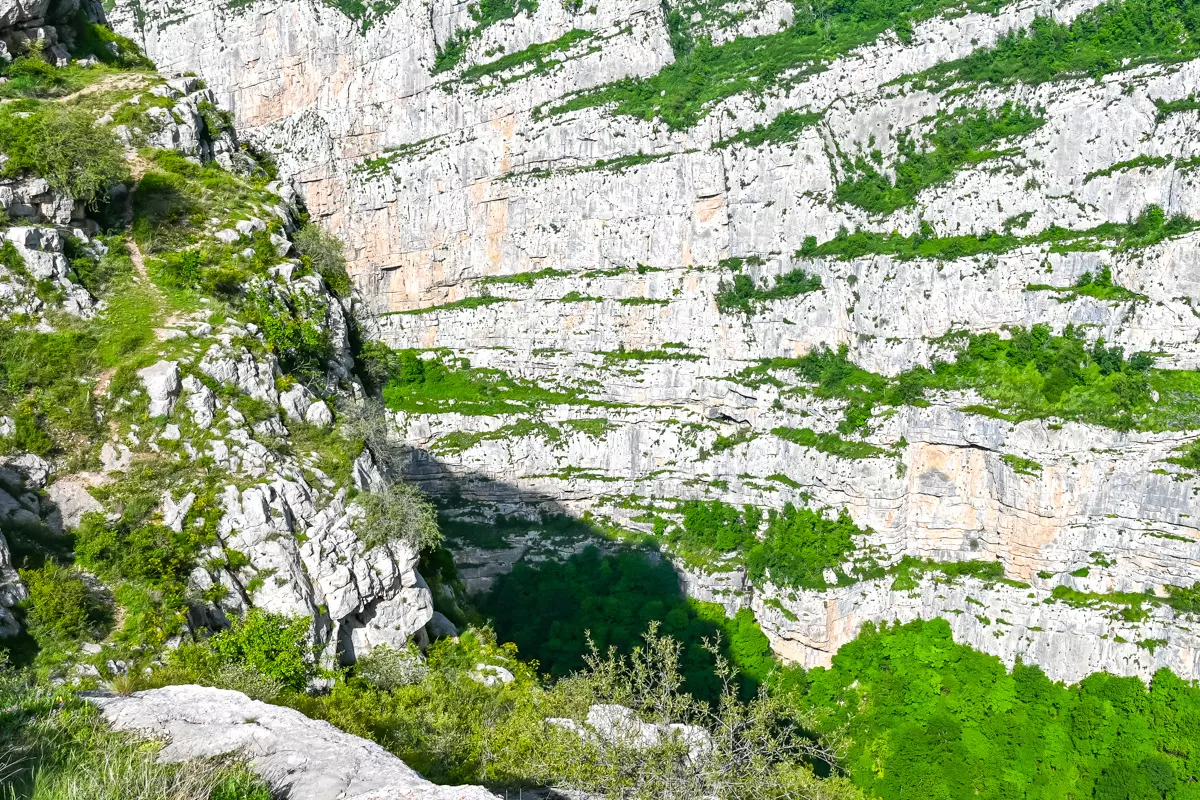
Hunot Gorge offers an ideal hiking spot in Nagorno-Karabakh. The trail starts at the outskirts of Shusha and winds down deep into the valley, where a small river flows. Along the way, several spots invite you to pause and enjoy views of the valley. Below, a dense forest, a creek, and natural rock formations create a beautiful landscape. One highlight is the Stone Umbrella, a natural rock that drips or flows water depending on the season, originating from the Mamrot Kar spring deep within the gorge. The water flows over moss-covered rocks, creating the impression of a natural mossy umbrella that changes with the seasons.
At the valley’s bottom, you can explore remnants of the ancient Hunot settlement, including masonry fragments, abandoned wall foundations, and several stone structures. Since the site lacks information boards, bringing a guide might help but isn’t essential. In summer, the area turns green and shaded, making it a perfect spot for swimming in the river.
Good To Know: The round-trip hike takes about 2–3 hours. The descent feels easier than the ascent, so remember to bring extra water supplies.
Dadivank Monastery
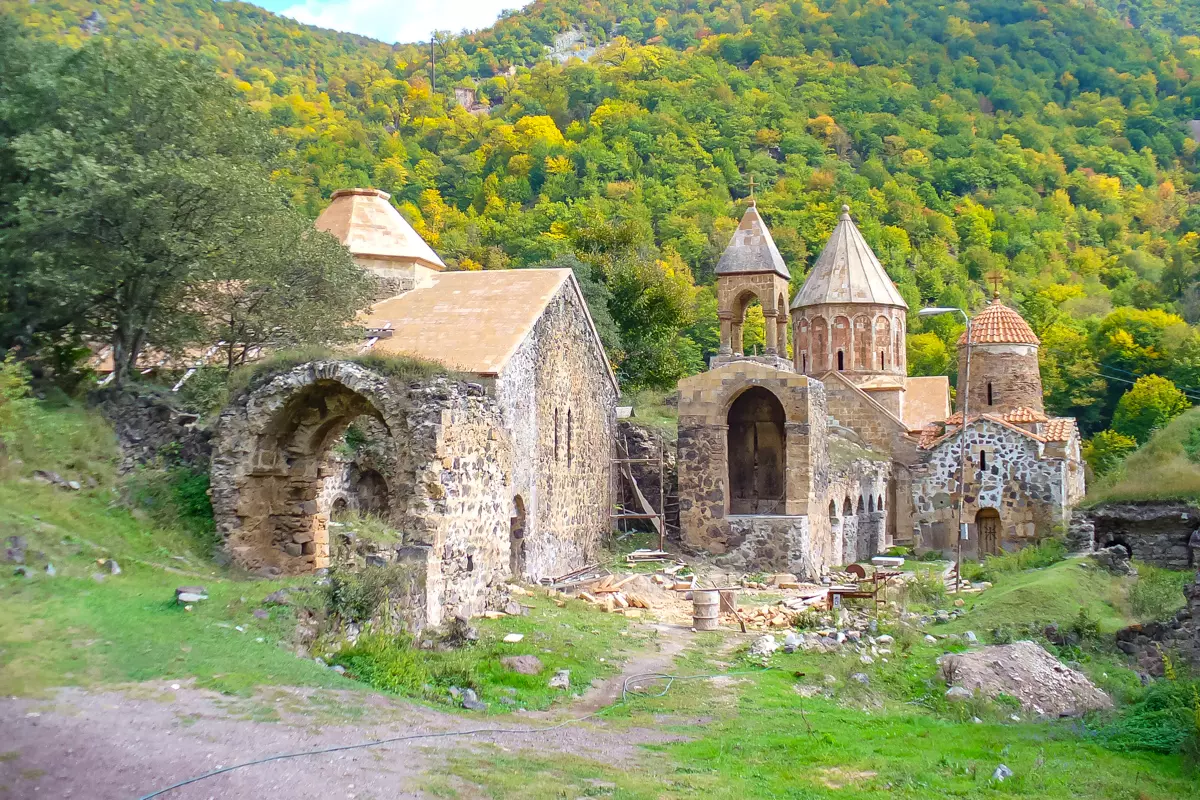
Dadivank Monastery stands as one of the most important historical and cultural landmarks in the Kelbajar district of western Azerbaijan. Founded in the 6th century, the monastery served as a vital religious center for the Christians of Caucasian Albania. The name Dadivank comes from Dadi, meaning gift, which is why locals regard the monastery as God’s gift. Despite facing various challenges and destructions over the centuries, Dadivank has maintained its religious and cultural importance, drawing visitors as a key landmark and pilgrimage site.
Dadivank attracts attention for its distinctive architecture and well-preserved carvings, which showcase both Armenian and ancient Caucasian Albanian Christian traditions. The main church, built around the 11th-12th centuries, features walls decorated with delicate stone carvings and frescoes depicting biblical scenes and saints. This site perfectly illustrates how Christian architecture merges with local traditions, creating a unique cultural heritage.
Get Your Exclusive Nagorno-Karabakh Travel Tips PDF Now!
During my travels in Nagorno-Karabakh, I realized this region is still largely unexplored, with outdated or superficial information available. I found some basic facts online, but little useful content for travelers.
So, I decided to gather everything in one place – not as a journalist or official guide, but as a traveler who explored, researched, and took notes. Here’s a sneak peek at what’s inside:
- ✔️ Contact details for an excellent tour operator I struggled to find.
✔️ Detailed descriptions of how to get to Nagorno-Karabakh, where to eat, and where to stay.
✔️ Exclusive tips that you won’t find online and that no AI can provide.
✔️ Practical information not just about Karabakh, but also about Nakhchivan and the whole of Azerbaijan.
How To Get To Nagorno-Karabakh
Nagorno-Karabakh is located in the South Caucasus, about 350 kilometers southwest of Baku. Though it isn’t a conventional tourist destination, there are a few ways to get there.
If you’re arriving from abroad, the most convenient option is to fly to Baku Airport first. To get insider tips and step-by-step guidance on reaching Nagorno-Karabakh, download the PDF guide, which I created after visiting the region.
Best Time To Visit Nagorno-Karabakh
The best time to visit Nagorno-Karabakh is during May–June and September–October. In these months, favorable weather brings daytime temperatures between +20–25°C, little precipitation, and no extreme heat or cold. Mountain roads remain generally passable, and visibility stays clear. You will be able to enjoy city sightseeing as well as short hikes or nature trips during this optimal period.
July and August bring extreme heat to Karabakh, especially in lowland areas like Agdam, Fuzuli, and Tartar. Temperatures often exceed +35°C with almost no shade. Mountainous regions like Shusha and Kelbajar tend to stay cooler, but you still need to prepare for dry weather, dust, and intense sunlight. This season suits only short visits to higher altitudes rather than extended trips.
In winter (December–February), harsh mountain weather arrives. Snow frequently falls in Shusha, roads become slippery, and routes toward Kelbajar and Lachin sometimes turn impassable. Some regions completely isolate from main roads, forcing travelers to change their itineraries. I recommend avoiding travel during the cold season unless you have a vehicle suited for the conditions and experience traveling in mountainous areas.
Another very important aspect is that spring and autumn provide excellent conditions for photography, with vibrant nature, full streams, and enhanced scenery from greenery or autumn colors. Milder temperatures make longer walks and visits to more sites possible without fatigue. If you plan to hike Hunot Gorge or explore around Shusha, these seasons offer the best conditions.
FAQs About Nagorno-Karabakh, Azerbaijan
No. Entering Nagorno-Karabakh through Armenian territory is illegal and prohibited by Azerbaijani law. All routes lead through Azerbaijani territory.
Yes, but only in a few locations, as infrastructure is still being developed.
If you’re interested in history, abandoned places, or traces of war, definitely visit. I highly recommend researching the area’s history before your trip or hiring a guide. This is the best way to understand and explore the region.
Yes, you can. However, I highly recommend traveling with an agency or a local guide, especially if you’re not an Azerbaijani citizen. You’ll find more detailed information in my PDF guide.
Yes, there is mobile phone and internet coverage in Nagorno-Karabakh. The internet worked fine for me, except in more remote areas.
Book your flight
For the best flight deals, I always rely on Skyscanner. Features like Multi-city and Explore Everywhere help me uncover incredible travel opportunities.
Rent a car
Discovercars is my top choice for comparing car rental prices for any road trip around the world. The booking experience is always smooth and easy.
Travel insurance
SafetyWing provides affordable travel medical insurance with global coverage, perfect for digital nomads and long-term travelers.
Book Tours & Attractions
Experiencing a destination to the fullest is easier with a well-planned itinerary. I use GetYourGuide for guided tours and Tiqets for quick access to museum and amusement park tickets.
Protect yourself online by VPN
No matter where I go, I always use NordVPN for secure browsing and to ensure I can access websites that might be blocked in certain countries.
Disclosure: I only suggest companies that I personally rely on. If you use the affiliate links in my posts to book services, I’ll earn a small commission, with no extra cost to you.
Have you ever been to Nagorno-Karabakh, Azerbaijan? I’d love to hear about your experience in the comments!
Share on

Hi, my name is Marius, and I’m driven by a desire to explore the hidden corners of the world. Less-traveled destinations like Saudi Arabia, Kazakhstan, and Mongolia fascinate me with their authentic cultures and untouched landscapes. For me, every trip is an opportunity to challenge myself, meet new people, and create memories that last a lifetime.
